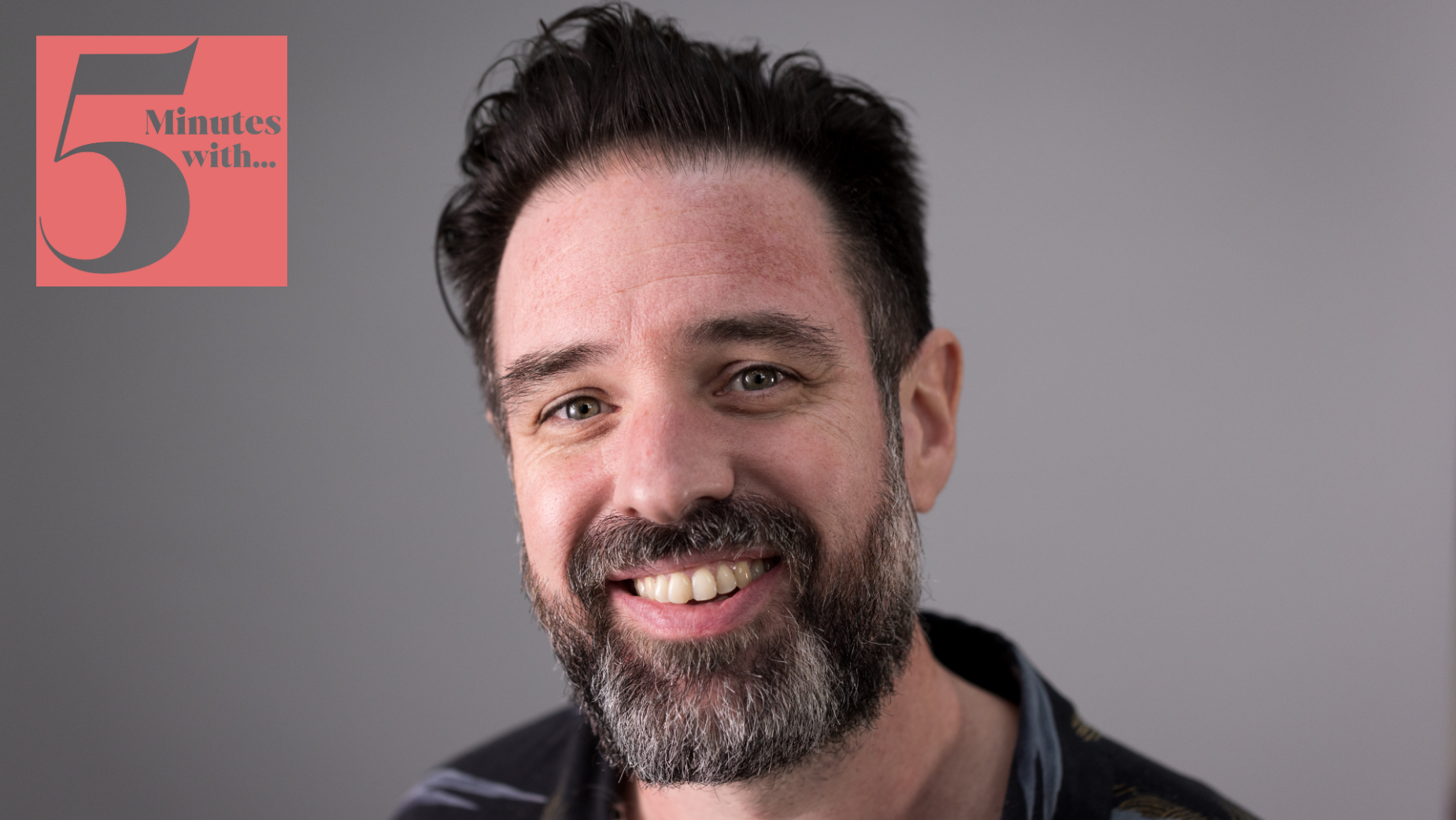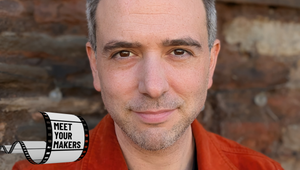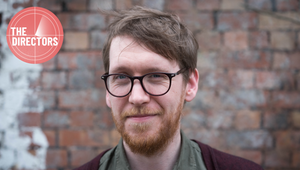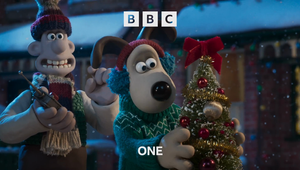
5 Minutes with… Dan Efergan

Dan Efergan’s first kickstarter in creativity happened when he was told that one cannot actually bounce on a cloud. “Well, that’s not fun. The world should be more interesting than that,” he thought.
Followed immediately by “I’m going to make something that lets people do magical things like bouncing on clouds.”
This desire to bounce on clouds isn’t entirely random. Dan’s dad worked on cruise liners to visit DisneyLand and Walt Disney World in his early years, so he was exposed to a fair few magical trips that fueled his imagination from early on. “These places left a huge impression on me, the feeling of awe as you stepped into these architectural narratives left my eight-year-old head spinning,” he remembers.
So it came as no surprise that he wanted to recreate those worlds or better yet, make ones of his own. This actually led to him establishing a festival with fellow creatives at university, called ‘Submerge’. It sat at the intersection of art, technology and science – a combination that today is the playground of the creative industry. Dan had joined it before even knowing.
His mission to transport people into places of joy eventually brought him to Aardman (also through his ‘Submerge’ festival) where he now is executive creative director, interactive and innovation. In his role, Dan works across all interactive projects for the company, developing ideas, strategies and ensuring the creative excellence and high level audience engagement. He’s been instrumental in the conception and delivery of BAFTA-winning interactive projects such as the ‘Tate Movie Project’ and ‘World of Invention’, as well as other projects for BBC, Channel 4, Cartoon Network and Pan Macmillan.
Today, he breaks down his career and love of magic and science for us.
LBB> What were the first steps you took towards joining the industry? How did that go for you?
Dan> I was lucky enough to be surrounded by a load of amazing people at university, both lecturers and classmates. Armed with the wonderfully bullish naivety that you have when you’re 19 years old, we started a festival that tried to celebrate ‘the intersection of art, technology and science’. This was the early days of all these merging fields that would now be classed as the creative industry.
We ran this festival (called ‘Submerge’) for eight years, and during those years we joined and formed such an epic network of great people that I just kind of found myself in the middle of it all.
I appreciate how lucky we were. If it wasn’t for a few people telling us we could do these crazy ventures I don’t quite know how my journey would have panned out. Due to this experience, I try to help and support young creatives whenever possible, as sometimes it’s just saying ‘yep, do it’ that can change people’s paths in life.
LBB> And how did you zero in on the field of interactivity? What were your first projects?
Dan> Interactivity was really where I started. I’d always wanted to make stuff happen, so I would take apart the games we played on our Amstrad or early PCs and change bits. University locked that passion into place, so I started making games and other things from there onwards.
My route into Aardman is slightly more obscure. Running ‘Submerge’ had led to having a network of talent, and our desire to find constant funding for the festival led to setting up a recruitment agency connecting companies to this amazing talent. One of the jobs that I was trying to support was the new interactive creative director position at Aardman. It took a long while, but once people close to me convinced me I should go for it, I finally went for the role myself.
One of our first projects was the BAFTA-winning ‘The Tate Movie Project’, a beautiful bit of transmedia chaos where we connected kids from across the country to work with us and make an animated film.
LBB> In the Aardman universe, what role does interactive play and since when? Why is it an important aspect?
Dan> We’ve been making interactive ‘stuff’ for over 17 years. Over that time, its purpose has morphed, as attitudes have shifted – from marketing, to supporting brands, to now being a major part of building our universes.
These changes are driven by interactive’s relevance to our audience. Fans of Aardman, both young and old, now hang out on a huge variation of platforms, and consume a huge variation of formats. From Roblox to gaming, to various social platforms, our fans want to be with our IP, so we, in turn, must find ways of being there with them.
LBB> Overall, what is the niche looking like right now? Are streaming websites allowing for much interactive content, or are there other, more suitable platforms for it?
Dan> In some ways there’s more places to host interactive content, in other ways, less. For example, gaming has become prolific. You can play on nearly every device that has a screen: mobile, TVs, consoles, PCs etc. But these spaces are also extremely competitive, so getting the opportunity can be hard, and becoming visible even harder.
Another factor changing the landscape is the way interactive formats have changed. Now, single ‘games’ are platforms in themselves. A recent report suggested that approximately 80% of people’s attention was being eaten up by established games, 40% of that by games such as Fortnite, Minecraft and Roblox.
LBB> How can advertisers benefit from interactive content in your opinion?
Dan> I believe interactivity offers two particularly useful aspects that pure storytelling can’t by itself.
The first comes from creating spaces to let people experiment. Making playful ‘sandboxes’ are powerful ways to explain things through experimentation. If the best sales technique is letting people realise what something is, and how it’ll make their life better, then letting them work that out themselves can be a powerful technique.
The second is simply retention. Interactive products, particularly playful products, can be wonderful loops to keep people close. In an extremely fragmented space, time and attention are valuable commodities.
LBB> Where does your inspiration come from when it comes to starting new projects and what are your usual first creative steps?
Dan> It usually starts with ‘why’. If we’re going to make something for one of our IPs, or working with other brands or agencies, you have to understand why it’s worth making anything interactive.
Once you understand why, then it’s all about translating that purpose into the right kind of interactivity. What are we trying to get people to feel? What kind of actions will make that happen? We talk a lot about ‘verbs’, as interactivity is about doing stuff, what are people going to be doing, and is that right.
LBB> Tell me about a recent project that was really important to you and why?
Dan> One of our current projects, ‘Chicken Run: Eggstraction’ is particularly exciting. Not only has it brought the biggest team together in-house to build a game, but it’s also deeply intertwined with the Chicken Run IP. The game sits alongside our latest movie release ‘Chicken Run: Dawn of the Nugget’, allowing fans to pick up where the film leaves them. This ability to interconnect parts of our universe together across these formats feels like exactly what a company like Aardman should be attempting.
And, while I’m mentioning it, shameless plug… it comes out on Netflix Games, end of this year.
LBB> When it comes to the industry and your specialism, what are your favourite things about it? And what about the things you don't like much - do you use your position of influence to try to change them and how?
Dan> Interestingly, the answer to both are the people who work in it. Hanging out with people who craft ‘play’ is so deeply rewarding. Their passion and energy from so many different disciplines, from art to animation to technology and game design, is just the best thing to be around.
The industry, contrary to general belief, is reasonably diverse. We have a huge range of individuals that make games and interactive projects. But we could do better.
The industry is also full of neurodiverse people, and we need to provide supportive environments to minimise challenge and friction. There should be more women across the industry, particularly heading up teams. I’ve seen that many talented women have set up their own studios to provide the environments they need to flourish, which is amazing, but that shouldn’t be necessary.
So, best is the people and worst is that we need more of them.
We do what we can to draw diverse voices into our company, but these things are always partly systemic. Therefore we try shouting about change, supporting mentoring, advising practice and setting policy. All help the long journey to ensure teams represent the variety that makes up our world.
LBB> What are your biggest passions outside of work?
Dan> Ha, well once I finish renovating my house, hopefully I can get some time back for passions.
I’m still a massive geek at home too. I love to find time to make music, I’ll happily sit up and wire together bits of electronics to Arduino boards, and if I could find the time, I have a personal passion for projection mapping… I think it’s a great combination of both architecture and magic. I guess this is much like Disney is, so it’s still in my head somewhere.















